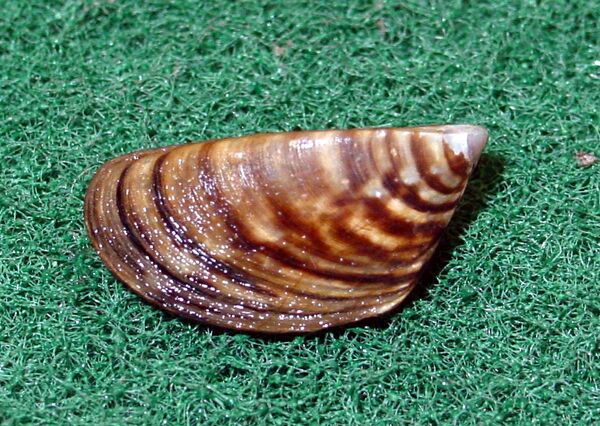WASHINGTON, June 21 (RIA Novosti) – The Russian mollusks are coming! The Russian mollusks are coming! Check that – the Russian mollusks have arrived.
A destructive species of mussels native to Russia that wreaks havoc on aquatic ecosystems has rattled Texas wildlife officials after it was discovered in a lake connected to a crucial water source for the Dallas area.
A single specimen of the so-called zebra mussel, an invasive mollusk first documented in Russian rivers more than two centuries ago, has been found in Lewisville Lake outside Dallas, the Texas Parks and Wildlife Department said this week.
“They can clog public-water intake pipes, harm boats and motors left in infested waters by covering boat hulls and clogging water-cooling systems, annoy boat-dock owners by completely covering anything left under water and can make water recreation hazardous because of their razor-sharp edges,” the department said in a statement.
It is the third Texas lake in which the zebra mussel has been discovered, two of which are in the basin of the Trinity River, which is the water source for 2.4 million customers serviced by Dallas Water Utilities, The Dallas Morning News reported.
German-Russian scientist Peter Simon Pallas was the first to describe the zebra mussel based on specimens he discovered in 1769 in a tributary of the Ural River in the Caspian Sea basin while working in Russia on invitation of Catherine the Great.
The expansion of commercial boat traffic in Europe allowed the species to cling to vessels and be carried westward, and with no natural predators, the mollusk was living in waters across most of Europe throughout the 19th century.
Zebra mussels were first documented in North America in 1988, when they were discovered in the Great Lakes region, a migration scientists say was likely enabled by ocean-going vessels from Europe dumping ballast water in the Great Lakes, according to the US Geological Survey (USGS).
By 2010, zebra mussels had turned up in lakes and rivers in 28 states, according to USGS data. A 2007 US government study estimated the economic impact of zebra mussels on US electric generation and water treatment facilities at $267 million between 1989 and 2004.
In the wake of the confirmed discovery of the species outside Dallas this week, Texas officials are urging boaters to clean, drain and dry their boats after use in order to prevent the mollusk from spreading to other bodies of water in the state.
“Once they are established there is no known way to get rid of them,” Carter Smith, the state’s top wildlife official, said in a statement.




